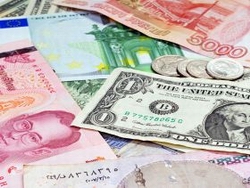 According to a report from the Australian Bureau of Agricultural and Resource Economics and Sciences at the Australian Agriculture Department, with food security at the forefront of government policy agendas worldwide, much of the focus is on how the world will respond to a rise in food demand over the next 40 years.
According to a report from the Australian Bureau of Agricultural and Resource Economics and Sciences at the Australian Agriculture Department, with food security at the forefront of government policy agendas worldwide, much of the focus is on how the world will respond to a rise in food demand over the next 40 years. Many institutions, including the Food and Agriculture Organization of the United Nations (FAO), the International Food Policy Research Institute (IFPRI) and ABARES, have published projections of an increase in global food demand out to 2050.
The report, Global food production and prices to 2050 - Scenario analysis under policy assumptions by Verity Linehan, Sally Thorpe, Caroline Gunning-Trant, Edwina Heyhoe, Kate Harle, Mary Hormis and Keely Harris-Adams highlights three scenarios to investigate the possible response of world food prices, food production and trade to the projected increase in demand. The work builds on agrifood modelling in ABARES Food demand to 2050: Opportunities for Australian agriculture (Linehan et al. 2012a).
The uncertainties and dynamics surrounding factors such as climate change, international trade policy and biofuels policies add to the complexity of modelling global agrifood markets out to 2050.
However, scenario analysis, which isolates each of these issues, allows for an assessment of indicative price and production responses over the projection period across different regions and agrifood commodities.
A reference scenario was developed for the project using a set of assumptions drawn from the literature. The reference scenario serves as a starting point for the policy analysis and shows the sensitivity of the projections to changes in assumptions and parameter values.
In the reference scenario, the average price of world agrifood products in 2050 is projected to be 11.5 per cent higher than in 2007.
However, the report says that it should be noted that prices have already risen considerably since 2007 and the price projections in this paper represent a marginal increase from 2012 average prices.
The fish meal and oil, fish, meat, oilseed oils, and cereals commodity groups experience the largest price rise over the projection period.
Associated with these price increases is a 75 per cent rise in the projected real value of world agrifood production and consumption over the same period.
Most of the projected rise in food production occurs in Asia, where the real value of agrifood production is 84 per cent higher in 2050 than in 2007 (in 2007 US dollars).
China accounts for over half the projected increase in the real value of Asian agrifood production, particularly from the meat, dairy products, fish, and vegetables and fruit commodity groups.
However, when trade is more liberalised, the report says the rise in the real value of world agrifood production by 2050 is projected to be higher than the reference scenario, at 86 per cent.
To compare the implications of alternative policy assumptions relating to food production, two additional scenarios are included in the report.
The first policy scenario examines the response of world agrifood markets to more liberalised agrifood trade with trade liberalisation assumed to lead to additional productivity growth. Under this scenario, world agrifood prices rise 10.4 per cent between 2007 and 2050 (in 2007 US dollars). This projected price increase is not as strong as the reference scenario (when agricultural trade is protected) because of the assumed higher productivity growth induced by trade liberalisation. Liberalised trade also leads to a stronger rise in the real value of global agrifood exports between 2007 and 2050 compared to the reference scenario (180 per cent rather than 149 per cent) as open markets allow an expansion of global trade.
The second scenario examines the response of world markets to a reduction in food grains in the production of biofuels in the United States and the European Union.
When maize is completely removed from the production of US and rapeseed from the production of EU biofuels, the world price of maize falls in 2050 relative to 2007 as the competition for maize between the livestock, food and energy sectors is reduced.





